Duo Valve
Back to: WIS 83.40 Automatic Climate Control (ACC) or Heating Ventilation and Air Conditioning (HVAC)
Description - Duo Valve
In a LHD vehicle there is a duo valve in the Driver's (left) side rear engine compartment for the standard two zone ACC and, where fitted, a duo valve in the front right wheel well for the rear HVAC.
In a RHD vehicle there is a duo valve in the Driver's (right) side rear engine compartment for the standard two zone ACC and, where fitted, a duo valve in the front right wheel well (TO BE CONFIRMED) for the rear HVAC.
The next figure shows a Duo Valve partially removed from a LHD vehicle.
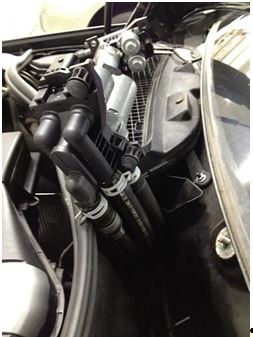
Issues - Duo Valve
Issue 1 with Duovalve (NB LHD Vehicle)
Acknowledgement of contributions by BenzWorld Members, finntexan and dcarveriii.
The duovalve in W220 is located in front of the firewall but behind the sound insulating wall. Four inches below the black plastic liner which is in front of the windshield. Just a little bit toward the driver's side from the car center line. You can barely see it under the hood when looking from the driver's side of the car.
Issue 2 with Duovalve (NB LHD Vehicle)
I changed my duovalve a few days ago and learned some things while doing it. I had followed the original post which I found after cracking my windshield baffle that the pictures were specific to a W211, and not my W220. So I hope these pics and steps help some of you looking to do this repair. I can tell you that I have almost zero repair experience, as you can see from my rambling and poor pics and thought this repair was fairly easy if you take your time and follow the steps. The duovalve is located under the windshield wiper plate fairly close to where it is on the W211, so you can follow the first few steps of the W211 thread to get you started but here are the steps.
Issue 3 with Duovalve Circulation Pump
A common issue is a failed circulation pump which is part of the Duo Valve Assembly. The symptoms are lack of heating when the residual heat option is activated with the engine off. Heating is available with the engine running. To see how to activate the residual heat option go to the Section "Residual Heating/Cooling" under Heading "Function - Automatic Climate Control (ACC)" in WIS 83.40 Automatic Climate Control (ACC) or Heating Ventilation and Air Conditioning (HVAC)
Several failure mechanisms are possible for a failed circulation pump including;
- Blown or damaged electrical circuit supplying power to the Circulation Pump.
- Seized Circulation Pump.
- Worn brushes in the Circulation Pump Motor.
The next figure shows an example of very badly worn brushes.
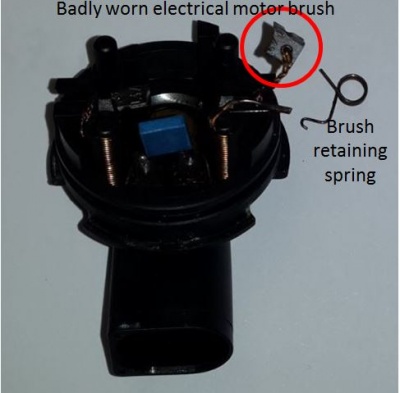
A new pump is expensive (about US$200) but a DIY fix is possible if the failure is due to worn brushes. See below.
DIY Procedures - Duo Valve
Method 1 for Duovalve (NB LHD Vehicle)
Refer to: http://www.benzworld.org/forums/w220-s-class/1271866-sorry-another-air-con-issue.html
Method 2 with Duovalve (NB LHD Vehicle)
Method 3 DIY Renew Brushes in Duovalve Circulation Pump
Remove the Duo Valve Assembly from the car. (See above DIY Methods for procedure.)
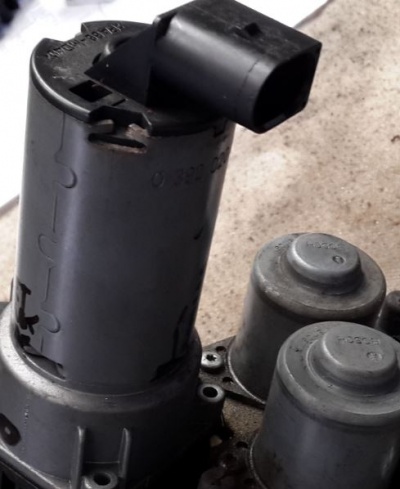
Prise open the three metal tabs to release the Motor End Plate.
Remove the End Plate from the Motor.
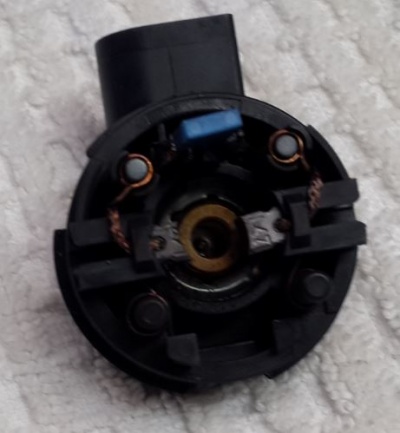
Check the dimensions of the worn OEM brushes.
- OEM brush width 5mm
- OEM brush thickness 5mm
- OEM worn brush length about 6mm.
- OEM original brush length about 11mm.
Purchase new brushes to suit these dimensions.
The author could not find exact replacement brushes but the Carbon Brushes for a MAKITA electrical tool with part number CB325 30-00-325-H can be modified to suit the Duovalve Circulation Pump. They are available for about $10 for a set of two.
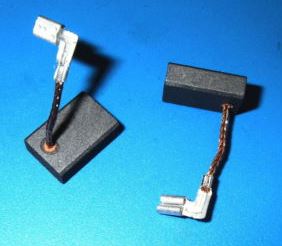
The MAKITA brushes have:
- a side entry lead
- an 18mm long lead
- brush width 5mm
- brush thickness 11mm
- brush length 15.8mm.
Sand down the MAKITA brush thickness (sand both sides evenly) to produce a brush with thickness 5mm.
Sand down the MAKITA brush length to produce a brush with length 11.5mm with a square end. Running the pump will soon remove the square end to match the commutator 13mm diameter.
Using a triangular file, file a small groove about 1mm deep across the MAKITA Brush (at 90 degrees to the lead entry) to locate the Brush Retaining Spring.
Carefully take off the connector on the MAKITA leads.
The next figure shows from Left to right;
OEM Worn Brush: MAKITA Brush as supplied: MAKITA Brush modified to suit Circulation Pump
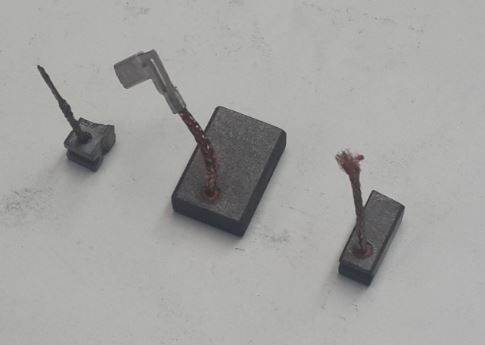
Solder each MAKITA brush lead to the electrical connections in the Duovalve Circulation Pump.
Use two small nails or similar thick wire inserted through the Motor End Plate holes to hold the brushes in the fully withdrawn position.
Start to reassemble the End Plate on to the Motor.
Once the brushes are next to the commutator, remove the two small nails or similar thick wire to allow the brushes to spring into place and contact the commutator.
Finally reassemble the End Plate on to the Motor
Using a centre punch crimp the tabs in place to hold the End Plate on the Motor.